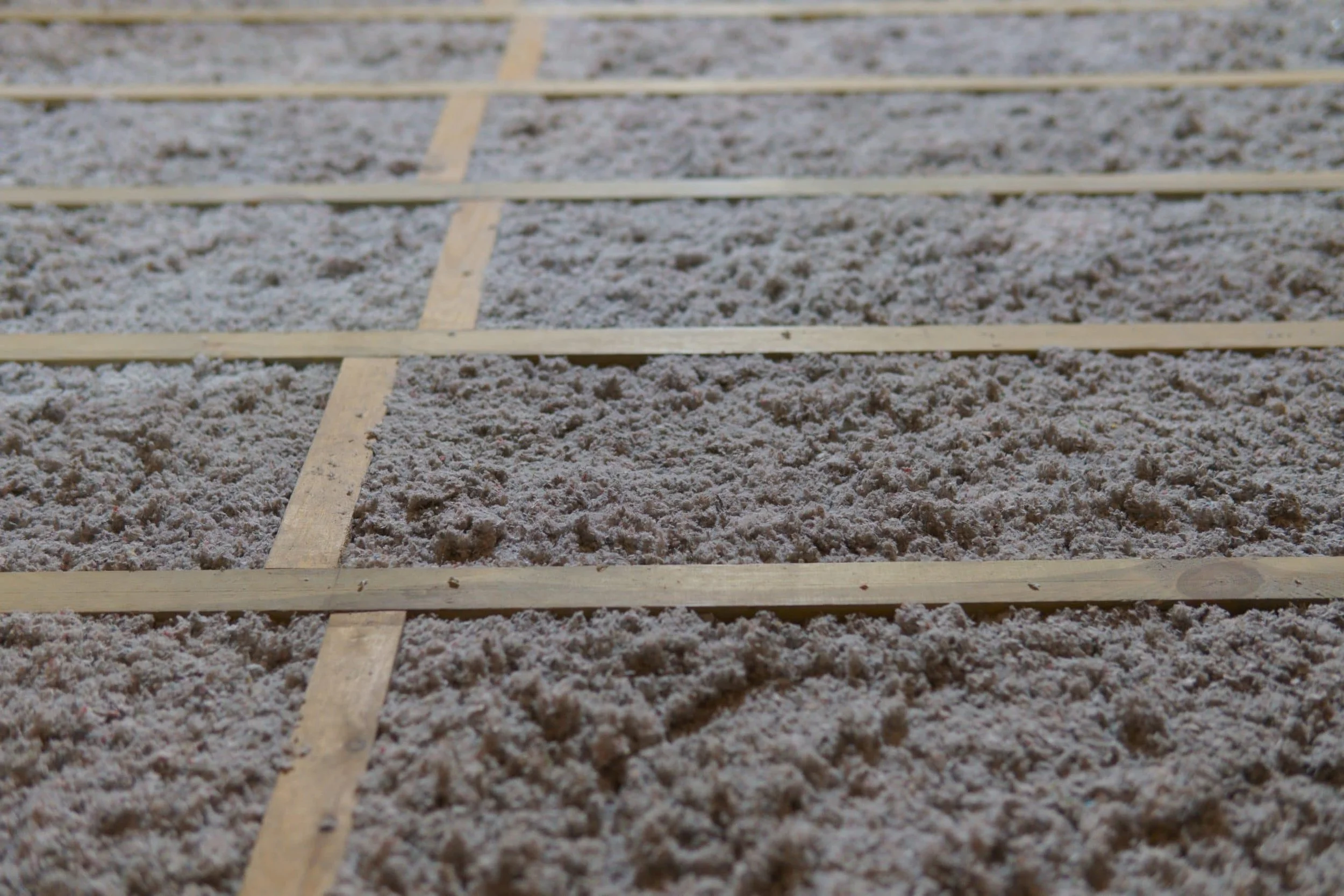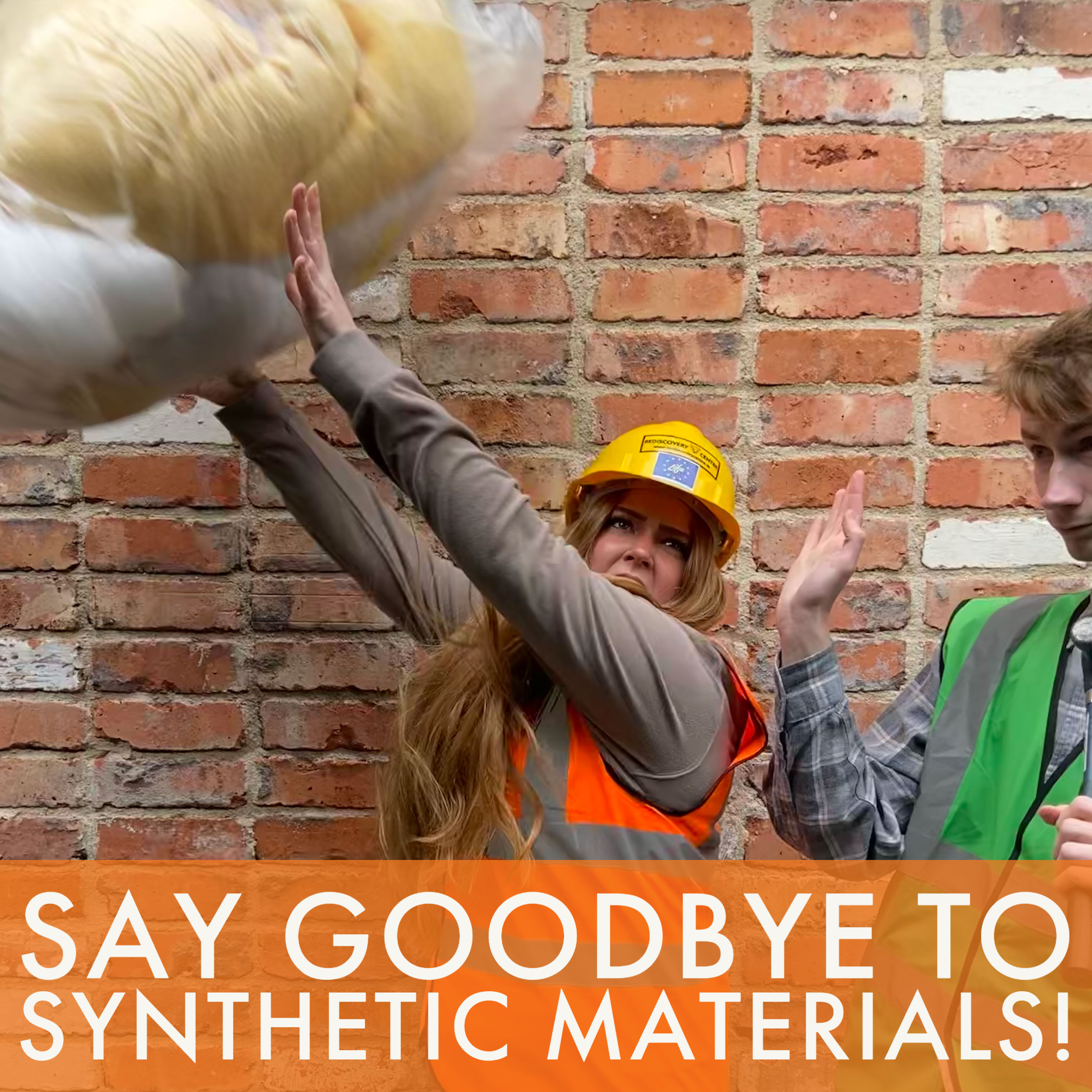Circular Economy Showcase
Buildings
Welcome to the Built Environment Circular Economy Showcase.
An initiative delivered by The Rediscovery Centre in strategic partnership with the EPA.
Did you know that buildings, roads and other manmade structures account for nearly half of all resources extracted across the globe?
Explore this showcase to discover circular innovations that, if implemented on a larger scale, would conserve resources and represent a 38% drop in CO2 emissions in the construction sector by 2050.
In 2020, global CO2 emissions in fell to 2007 levels as construction activity ground to a halt during the pandemic, yet the built environment still contributed 37% of global greenhouse gas emissions. As the world recovers with calls to ‘build back better’ in the years ahead, business-as-usual building practice could throw climate targets into doubt.
There’s plenty of room for improvements. Better communication between businesses, designers and builders would boost circular economic innovations to flourish such as resource-matching - converting one's waste into another's resource, reuse certifications, as well as ‘reversible buildings’ with replaceable parts.
As Ireland is in the midst of a housing crisis, circular economic strategies that bring buildings back into use can ensure that structures are renovated, made use of, and saved from dereliction.
Reuse in Home Renovation and Retrofit - Go Green and Save Money
A talk on eco-friendly home renovation, tips for waste reduction, reuse & repair.
Overview
A conversation on reuse in home build, retrofit, and renovations where practical tips were heard on how to prevent waste through reuse and repair, contributing to the circular economy and climate reduction targets. The event was open to the public but benefited architects, builders, and anyone else in the construction industry who wanted to integrate the principles of the circular economy into their work.
Participants had the opportunity to engage with expert speakers during a morning of thought-provoking talks about building circular homes, salvaging materials in historic buildings, second-hand exchanges and shops for construction materials, and sustainable finishing.
Schedule
Rediscovery Centre & Roisin Murphy MC
Ali Grehan Dublin City Architect: Building reuse in Dublin
Joseph Little - Head of Discipline Building Performance & Construction, TU Dublin: Building a Circular Home
Fergal McGirl - Conservation Architect: Re-use in conservation practice
Q&A and break- Jenny Williams, Chief Executive, Habitat for Humanity: Restore -
Second hand DIY- Jack McCarthy, Secretariat for the Paint Reuse Network
Presentations

Reuse in Construction
Re: use
The greenest building is the one that already exists. The ability to repurpose buildings for different uses over time is increasingly necessary.
With the construction industry contributing to 48% of Ireland’s annual waste, the call to action must be just as substantial.
Although there have been strides towards a less wasteful industry, reused materials are still fighting to be recognized. New schemes, initiatives, and activism have highlighted the benefits of improving Ireland’s sustainable building infrastructure. Reuse construction also aids in targeting Ireland’s housing crisis and financial gap. The incorporation of reused materials cuts construction costs while also minimising the amount of waste being produced. By popularising reuse and sustainable construction, Ireland’s newest buildings will be born with character. From refurbishing derelict homes to working to provide solutions for high energy bills, Ireland is on the cusp of change/a better future.
Salvaged Materials
Salvaged materials play a large role in reducing Ireland’s waste output. These materials are a product of deconstructed buildings.
Below are examples of how Irish companies are working towards a less wasteful future.
Limerick Opera House
A great example of material reuse in Ireland can be found in Limerick at the site of the Opera House. It's one of the country’s biggest projects involving the recycling and reuse of construction rubble in which over 1,000 tonnes of stone, brick, cobblestone, old doorways and gates have been salvaged after the four-acre site was levelled.
A pre demolition audit was designed to find out how much of the material on the site could be reused, recycled, repurposed and maybe remanufactured, and only as a last option would disposal to landfill be considered.
Already materials have been diverted for reuse at a wall at the Foynes Flying boat museum, for the repair of a wall at Holycross Abbey in Co Tipperary, palisade fence panels have been sent to Richmond Rugby club, and the metal entrance gates at the old Granary have been sent for use by Limerick Civic trust.
And there’s further new life for these old stones and bricks. With help from Limerick regeneration funds, and the Limerick City Build organisation, they are also being used to train early school leavers as stone masons and for other building trades.
Don’t forget to…

Elements of Circular Design
Designing for the Future
The built environment’s design stage is key, both for buildings to have long-term use and to adapt to the needs of their users over time. Putting people at the heart of design is vital, with good design fostering strong communities. Green spaces and quick, easy accessibility to a range of services by either foot, bike or reliable public transport will keep residents active, reduce their carbon footprint and improve air quality. Incorporating water and energy efficiency measures not only reduces the impact of buildings upon the environment, there’s cost saving benefits too. Read on to discover a range of examples of cutting edge circular design and tools that designers can use to incorporate these elements into their own projects.
Emerging Design Concepts
Design Strategies
To fully enable the potential of circular design, we must embrace bold new design strategies that push the boundaries of architecture, policy and the built environment. Find some strategies and toolkits below that can guide you on the path to circular design in practice.
Design Toolkits and Resources
Material Passports
Through building information modelling, material passports provide a digital record of a material’s function, quality, past use, maintenance, guidelines for disassembly, recycling and reuse. Effectively dealing with buildings at the end of their life has the potential to unlock significant economic value. However the value that can be extracted is very much dependent on how the buildings have been designed and built.There’s also a guide for how to disassemble, recycle or reuse the material.

Choice of Materials
A Material World…
Searching for eco-friendly government approved alternative materials to construct a sustainable and more efficient building? Explore which materials can be swapped for a more eco-friendly option!
The choice of materials also affects how the buildings perform in different conditions and affects the environment within, which in turn affects further resources use (heating and cooling) as well as the well-being of the occupants. So at the beginning of the design process, choice of materials has an enormous impact on the sustainability of a building.
Renewable resources are considered to be resources belonging to the natural environment and are replaced naturally through processes in an ecosystem.
Material Reuse in Action
The Boiler House, which has been repurposed into the Rediscovery Centre, is one of the only buildings remaining from Dublin’s Ballymun estate that was built in the 1960s. Successfully designed buildings should last much longer than that! Scroll through the examples below to discover ways that building materials are being kept in circulation for much longer.
Circular and Sustainable Materials
Material Innovation at The Rediscovery Centre





































